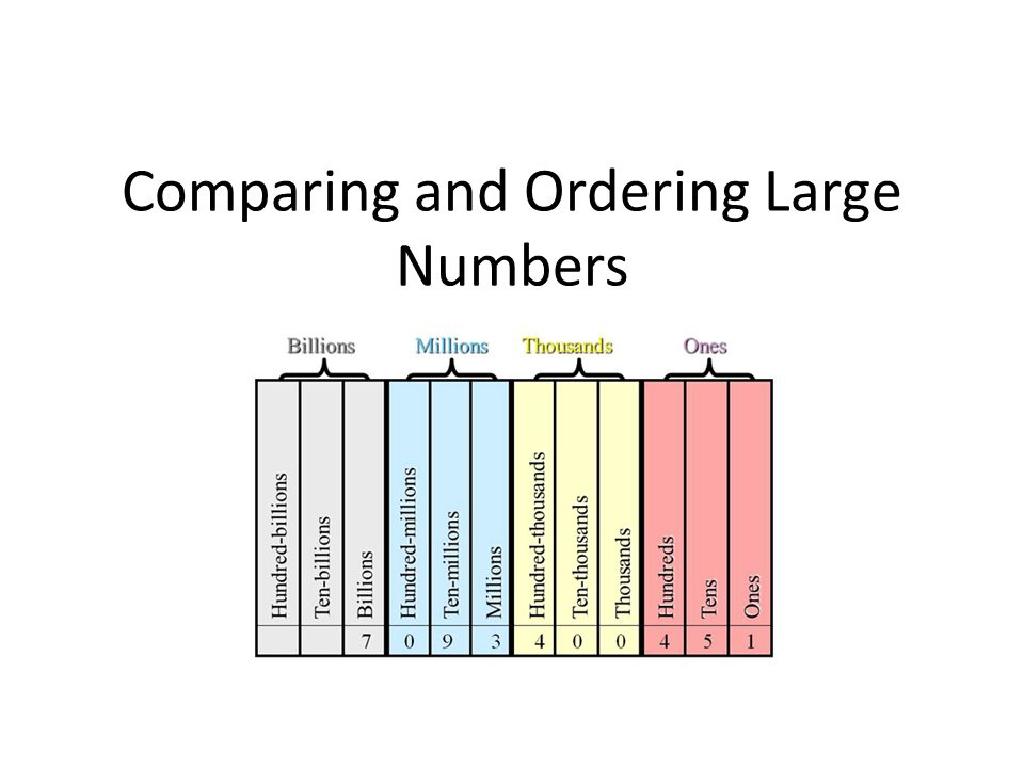Understand Quantity Supplied And Quantity Demanded
Subject: Social studies
Grade: Seventh grade
Topic: Supply And Demand
Please LOG IN to download the presentation. Access is available to registered users only.
View More Content
Introduction to Supply and Demand
– Basics of a market economy
– Define supply and demand
– Supply: how much is available. Demand: how much people want.
– Significance of supply and demand
– They determine the price and quantity of goods.
– Interaction affects prices
– High demand + low supply = higher prices; low demand + high supply = lower prices.
|
This slide introduces the foundational concepts of supply and demand within a market economy. Begin by explaining what a market economy is and how it operates based on the decisions of consumers and businesses. Define supply as the amount of a product or service that is available to consumers, and demand as the desire of consumers to purchase goods and services. Emphasize the importance of supply and demand in determining the prices and quantities of goods available in the market. Illustrate how the interaction between supply and demand affects prices, using real-life examples such as the cost of popular toys during the holiday season or the price of fruits and vegetables depending on the season. Encourage students to think of other examples where they have seen supply and demand in action.
Exploring Quantity Supplied
– Define Quantity Supplied
– The total amount of a product that producers are willing to sell at a given price
– Factors influencing supply
– Costs, technology, taxes, and subsidies can affect how much producers supply
– Real market examples
– Seasonal produce availability or tech goods prices can illustrate changes in quantity supplied
– Understanding market dynamics
|
This slide aims to introduce students to the concept of Quantity Supplied, which is a fundamental part of understanding market dynamics in supply and demand. Begin with a clear definition, ensuring students grasp that it’s about the amount producers are willing to sell at a certain price, not just what’s produced. Discuss various factors that can influence this quantity, such as production costs, technological advances, and government interventions. Provide real-world examples, such as how the supply of strawberries increases in the summer or how new technology can reduce production costs and increase supply. Encourage students to think of other examples and consider how these factors might influence the supply of their favorite products.
Exploring Quantity Demanded
– Define Quantity Demanded
– The total amount of a product consumers want to buy at a given price
– Factors influencing demand
– Price, income levels, and consumer preferences are key factors
– Real market examples
– Seasonal demand for ice cream or tech gadgets during sales
– Understanding demand curves
|
Quantity demanded is a fundamental concept in economics that refers to the total amount of goods or services that consumers are willing and able to purchase at a certain price level. When discussing this concept with students, emphasize how various factors such as changes in price, shifts in consumer income, and changes in tastes or preferences can influence the quantity of a product that people want to buy. Provide real-life examples, such as the increased demand for ice cream during summer or the surge in demand for the latest technology when prices drop during holiday sales. Introduce the demand curve as a graphical representation of the relationship between price and quantity demanded, setting the stage for deeper exploration of market behaviors.
The Law of Supply: Market Dynamics
– Explore the Supply Curve
– A graph showing quantity supplied at different prices
– Price Impact on Supply
– Higher prices usually mean more supply, as it’s profitable
– Real-world Supply Example
– Example: More lemonade is made on hot days when it can sell for a higher price
– Analyzing Supply Changes
|
This slide introduces students to the Law of Supply, a fundamental concept in economics that describes how suppliers will typically offer more for sale at higher prices and less at lower prices. Start by explaining the supply curve, a graphical representation that shows the relationship between price and quantity supplied. Emphasize that as the price increases, producers are more willing to supply more goods because they can make more profit. Use a relatable example, such as lemonade stands on hot days, to illustrate how real-life supply can change with price. Encourage students to think of other examples and consider what might happen if prices were to decrease. This will help them grasp the concept of supply elasticity.
The Law of Demand
– Explore the demand curve
– A graph showing quantity demanded at various prices
– Price impact on quantity demanded
– As price decreases, quantity demanded usually increases
– Real-world service demand example
– E.g., More people want car washes when prices drop
– Analyzing demand curve shifts
|
This slide introduces students to the Law of Demand, a fundamental concept in economics that describes how the price of a good or service affects consumer demand. Begin by explaining the demand curve, which graphically represents the relationship between price and quantity demanded. Highlight that typically, as the price of an item goes down, more people are willing to buy it, which is why the demand curve slopes downwards. Use a relatable example, such as the demand for car wash services, to illustrate how a decrease in price can lead to an increase in the number of people wanting the service. Discuss with students how this concept applies to everyday decisions and the broader economy. Encourage them to think of other examples where they have seen the Law of Demand in action.
Supply and Demand in Balance
– Equilibrium in the market
When supply equals demand, the market is in balance.
– Equilibrium price and quantity
The price at which the quantity supplied equals the quantity demanded.
– Market self-regulation
Markets adjust prices to reach equilibrium on their own.
– Effects of market equilibrium
Stable prices and quantities where no surplus or shortage exists.
|
This slide introduces the concept of market equilibrium, a key concept in understanding supply and demand. Equilibrium occurs when the amount of goods supplied is equal to the amount demanded, resulting in a stable market condition. The equilibrium price is the price at which this balance is achieved, and at this point, there is neither a surplus nor a shortage of goods. Markets tend to self-regulate to reach this point, adjusting prices in response to changes in supply and demand. It’s important for students to grasp that equilibrium is a dynamic process, where markets are constantly moving towards balance. Use examples like farmers markets or online marketplaces to illustrate how prices fluctuate to match what consumers are willing to pay and what suppliers are willing to accept.
Shifts in Supply and Demand
– Factors causing supply & demand shifts
– Price changes, consumer trends, seasons affect supply & demand
– Impact on market equilibrium
– Shifts can lead to surplus or shortage, affecting prices
– Interactive shift examples
– Use graphs to visualize how supply and demand curves move
– Class activity: Identify real-life shifts
|
This slide aims to explain the dynamic nature of supply and demand in the marketplace. Start by discussing various factors that can cause shifts in supply and demand, such as changes in consumer preferences, technological advancements, or seasonal changes. Then, explain how these shifts can affect market equilibrium, potentially leading to a surplus or shortage and thus influencing prices. Use interactive examples, such as supply and demand graphs, to help students visualize these concepts. Finally, engage the class with an activity where they identify shifts in supply and demand from current events or their own experiences, discussing how these shifts could affect prices and market equilibrium. This will help students apply theoretical knowledge to real-world scenarios.
Class Activity: Market Simulation
– Create a classroom market
– Role-play as buyers and sellers
– Students take turns assuming roles to simulate a market scenario.
– Engage in market transactions
– Use classroom currency to buy and sell items, observing supply and demand.
– Reflect on the activity outcomes
– Discuss what happened during the simulation and what was learned about supply and demand.
|
This interactive class activity is designed to help students understand the concepts of quantity supplied and quantity demanded through a hands-on market simulation. Set up stations around the classroom representing different goods. Assign roles to students, with some acting as buyers and others as sellers. Provide them with classroom currency to conduct transactions. Observe how prices fluctuate based on availability and desire for items. After the activity, lead a discussion to reflect on how supply and demand affected the market, what strategies were successful, and how this simulation relates to real-world markets. Possible variations of the activity could include introducing market shocks, government regulations, or competitive pricing strategies to further enrich the learning experience.






